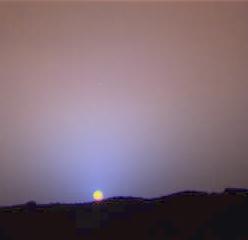This is an image showing a Martian sunset.
JPL/NASA
Mars' Thin Atmosphere
This is image of a Martian sunset illustrates just how thin the Martian atmosphere is.
The terrestrial "blue sky" comes about because molecules of the atmosphere scatter sunlight. In this image, the Martian sky appears pink and a little bit dark at sunset. This is because there are not enough molecules in the atmosphere to scatter the amount of light we are used to seeing on Earth, and also the many rusty-colored dust particles in the atmosphere contribute to the pink color. If you would like to know why the Earth's sky is blue, check the Quickie Question, below.
The thin atmosphere may have something to do with the cold surface temperatures because of the lack of a greenhouse effect, as well as having an affect on the strength of Martian winds.
You might also be interested in:
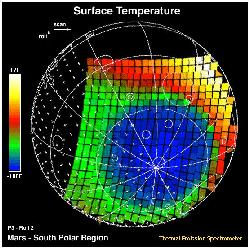
This image shows how cold the surface of Mars can be. The temperature was measured by the Mars Global Surveyor spacecraft. The scale to the left shows that purple regions are the coldest, about -170 degrees
...more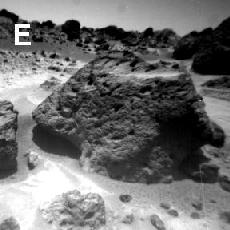
On Mars the surface winds accelerate to higher speeds than those on Earth. The general circulation pattern of winds is also very different from the terrestrial circulation pattern. These winds can be whipped
...more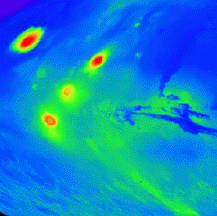
On this map of Mars, the lightly cratered Tharsis Ridge is shown, as well as the heavily cratered Martian highlands (near the bottom of the picture), and Valles Marineris to the right. The volcanoes are
...more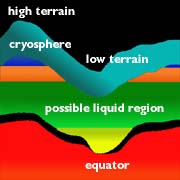
On Mars, the water is trapped, frozen, within the ground. Nevertheless, there is evidence for running water on Mars. When the water is melted and released to the surface, it will run from higher ground
...more
The drawing shows a crossection of the crust, and the unusual altitude variation of the Martian surface. The figure illustrates the depth of frozen ground at various latitudes, called the cryosphere. The
...more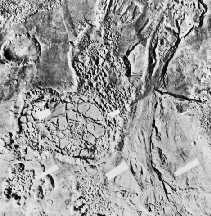
Separate from the Martian outflow channels, or the river valley networks, are large Martian lakes (600 km, or ~1000 miles across) which exhibit evidence of a periodic and catastrophic release of water
...more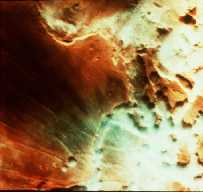
This is an image of fog in a Martian canyon. The presence of fog provides evidence of water, and a water cycle on Mars. More fog has been seen in images returned by Mars Global Surveyor of the south polar
...more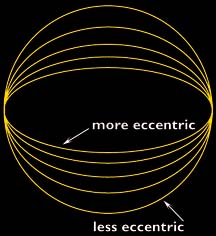
The Martian climate is more influenced by the shape of the Martian orbit than the climate of the Earth is influenced by the shape of the Earth's orbit. The orbit of Mars is more oval-shaped than that
...more
